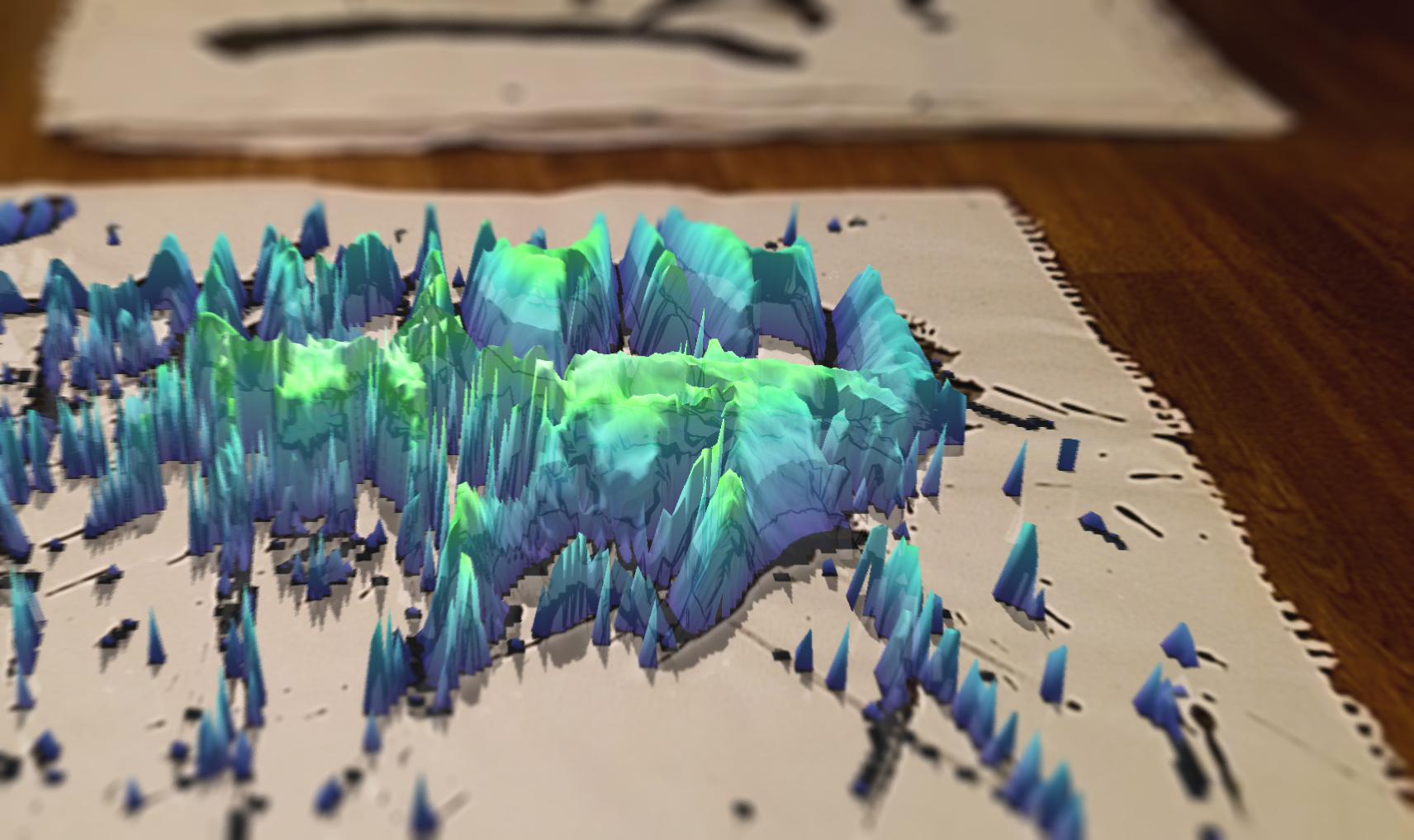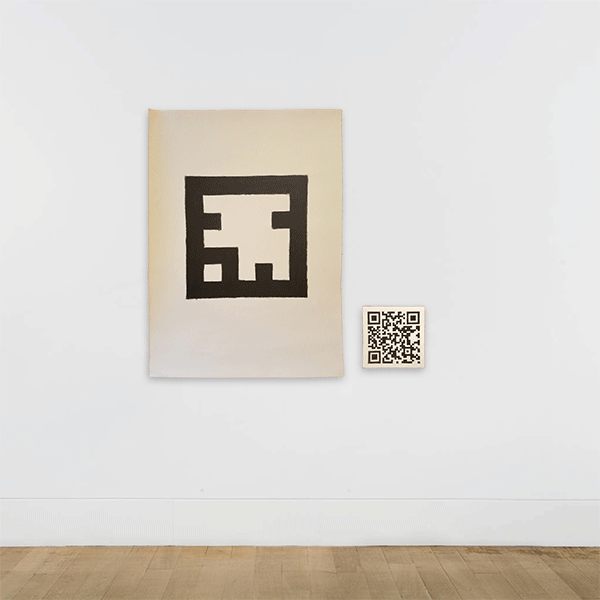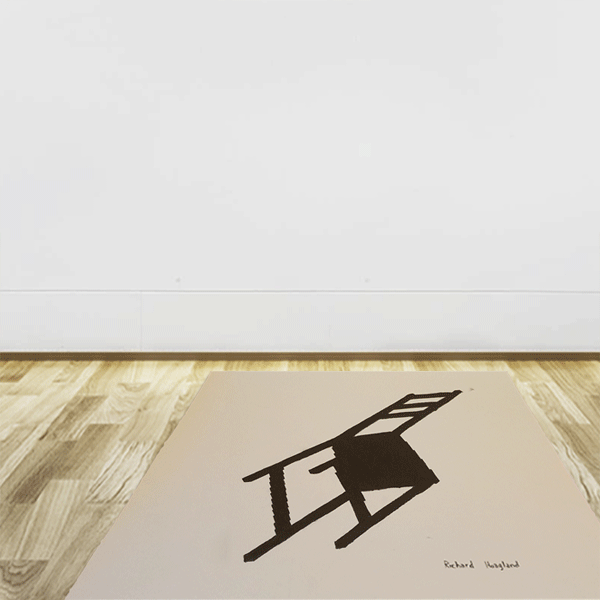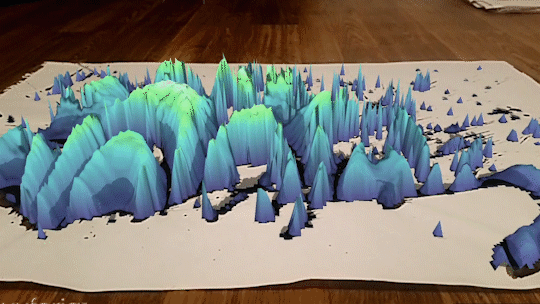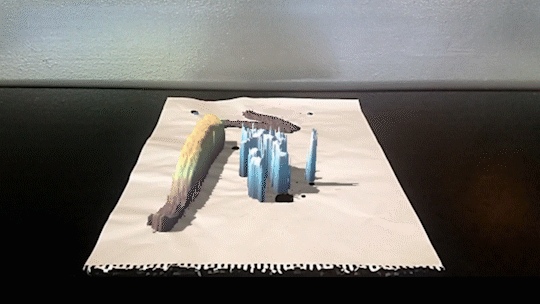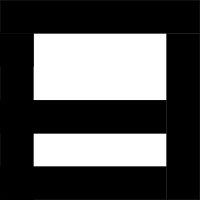Exploration #1: Marker based augmented reality
AR markers, also called fiducial markers, aid computer vision algorithms in grounding (registering) virtual objects within the physical world.
Markers exists as one sign with multiple meanings. The sign always exists to the AR app to register virtual content. Additionally the sign can signal to the viewer that AR exists here, as well as any other sign the creator imagines.
The first experiment consists of an AR sign drawn in charcoal, as well as a QR code drawn in charcoal. When a viewer scans the QR code with their phones, they are taken to a website. If the viewer then points their camera, with the website up, at the AR sign, a framed drawing of a chair is registered on the paper.
The second experiment consists of a charcoal drawing of the shadow cast by a chair. This shadow was used by an AR application to register the digital chair that casts the shadow.
Contextually appropriate markers
Contextually appropriate markers conceptually integrate AR techniques into the work.
Documentation of prototype 3. When a viewer points their phone at the charcoal drawing of a marker, a video is registered on the paper that loops video of the drawing of the marker.
